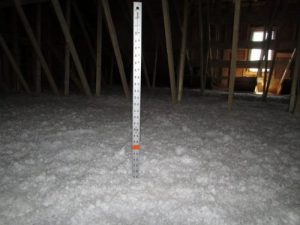When considering a new building, end users often debate whether to use an all steel or wood framed pole building. Steel has the perception of strength and endurance. Research and independent studies show pole buildings have several advantages over all steel.
Wood is unquestionably the most environmentally friendly building material on earth. It has better insulation, better fire resistance and better strength.
Wood is constantly growing and is sustainable. Trees in forests absorb carbon dioxide, making a growing forest an efficient carbon sink. As older trees are harvested, younger trees can grow more rapidly, allowing for a healthy and everlasting wooded area. Statistically, for every tree harvested, five are planted.
Other building types do not use renewable materials; they use materials such as cement and plastic, which severely impact the environment. Lumber does not need to be mined. Forestry practices adhere to rigid codes which have been instituted to not only balance, but improve our forests. Foresters are conscious of maintaining the ecosystem by replanting the trees, utilizing the whole tree and by leaving virtually no solid waste behind. The forests available for timber harvest are large enough to grow enough wood products to build millions of buildings each year, endlessly into the future. Wood is the greenest construction material on the market.
 Wood is more workable than steel, so it’s easier for a building owner to construct it themselves. With all steel buildings, many components are far too heavy to be moved and placed without expensive material handling equipment, like forklifts and cranes. All steel buildings require hiring expensive engineers to design foundation plans. With pole buildings, the foundation plans are part of the drawings. The foundations of all steel buildings must be absolutely, perfectly square and level and anchor bolts precisely placed, otherwise the bolt holes of the steel frame components will not align.
Wood is more workable than steel, so it’s easier for a building owner to construct it themselves. With all steel buildings, many components are far too heavy to be moved and placed without expensive material handling equipment, like forklifts and cranes. All steel buildings require hiring expensive engineers to design foundation plans. With pole buildings, the foundation plans are part of the drawings. The foundations of all steel buildings must be absolutely, perfectly square and level and anchor bolts precisely placed, otherwise the bolt holes of the steel frame components will not align.
Wood buildings have longer life spans than steel buildings. Steel “sweats,” causing moisture to get into insulation and steel connections. This provides conditions for mold to grow, which leads to corrosion and rust, shortening the longevity of the entire building. Once installed in a building, dry lumber will rarely warp or twist, it remains dimensionally stable. The steel building wall girts and roof purlins provide excellent nesting places for birds.
It takes nine times more energy to produce a steel stud compared to a wood stud. Wood, a naturally more efficient insulator than steel, can cut costs on heating and cooling by 30 to 50 percent. Steel is an excellent thermal conductor, creating a pathway for the transmission of heat and cold.
Comparing rack load capacities on different wall panels, the shear walls of a Hansen Pole Building outperform the tie-rod braced and cable-braced walls of typical all steel buildings.
All steel buildings, due to having roof purlins spaced generally every five feet and wall girts every seven feet, require steel sheathing which is thicker than on a typical pole building (the difference in thickness being approximately equal to a sheet of notebook paper). This minimal difference in thickness does not provide for more strength or durability of the building. The quality and warranties on the steel and paint systems vary widely, from none to “lifetime”. However what is available on one, is available on the other. They are not exclusive.
Wood is Safer in a Fire. While it sounds hard to believe, it’s absolutely true. Wood retains its structural strength at temperatures higher than 2000°F, while steel loses 80 percent of its strength at 1000°F. As it’s melting during a fire, steel bends and twists. According to many firefighters, it is extremely difficult and dangerous for them to stop a fire in a steel building and for people to escape. After a fire, while structural steel may appear intact, there is no way to effectively determine the remaining strength of the frame. The all steel building needs to be knocked to the ground, rather than being able to repair a wood framed pole building.
Over the years I’ve been offered opportunities to sell all steel buildings, either in combination or separate from wood framed pole buildings. Each time I’ve gone back and done the research to compare the two. People who know me…..know I do “due diligence” when faced with a decision. I want to know not just the facts, but the whole story. Each time what convinces me to say “no” are the stories from past clients of all-steel buildings. I just can’t endorse what I don’t believe in.









Wood has better fire resistance? than what?
Peter ~
The article does not tout wood as being fire resistant, it states: “Wood retains its structural strength at temperatures higher than 2000°F, while steel loses 80 percent of its strength at 1000°F.”
Large wood members have long been recognized for their ability to maintain structural integrity while exposed to fire. Early mill construction from the 19th
century utilized massive timbers to carry large loads and to resist structural failure from fire. Exposed wood structural members are popular with architects
and designers of modern buildings because they have a pleasing appearance, are economical and easy to use, while providing necessary fire endurance. The superior
fire performance of heavy timbers (e.g. post frame building columns) can be attributed to the charring effect of wood. As wood members are exposed to fire, an
insulating char layer is formed that protects the core of the section.
For more information on wood fire resistance you might want to read: https://www.awc.org/pdf/tr10.pdf
Best regards ~ Mike